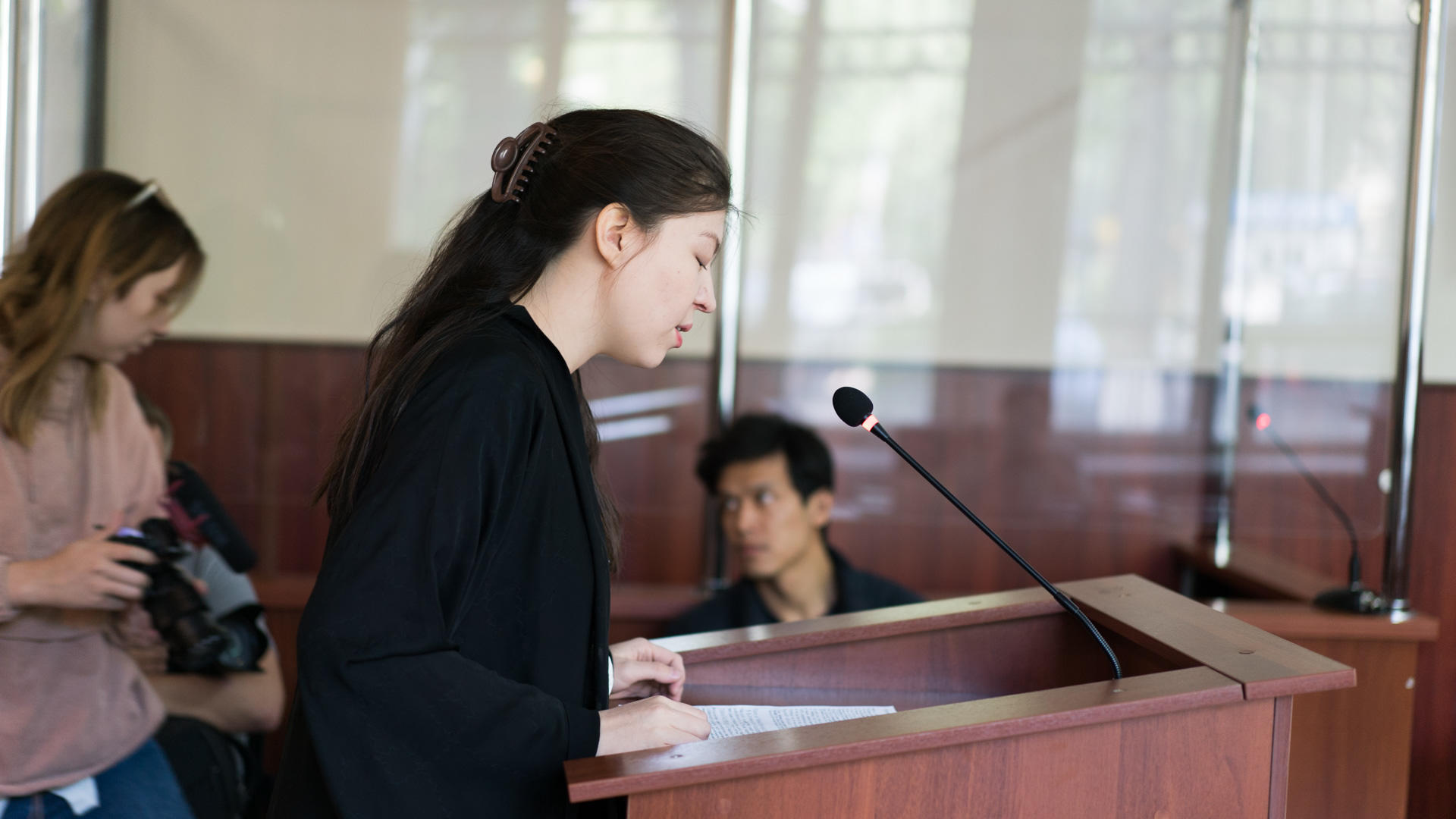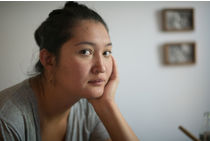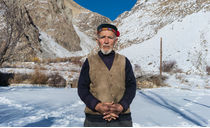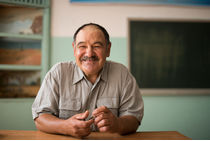Suinbike Suleymenova-Bazargaliyeva is an artist, filmmaker, and environmental activist. She is the creator of several works of art, documentary films, and videos, and her work has been shown in domestic and international modern art exhibits.
On April 21, Suinbike Suleymenova and filmmaker Aigul Nuburlatova and Aidos Nurbulatov filmed the flash mob organized by environmental activists Asya Tulesova and Beybarys Tolymbekov at the Almaty marathon. Tulesova and Tolymbekova unfurled a banner with the words “You can’t run away from the truth” and the hashtags “AdilSailayUshin (“For Fair Elections”) and #уМеняЕстьВыбор (“I Have a Choice”). The activists and filmmakers were arrested by police that day and were charged with disturbing public order under article 488 of the Administrative Code. The court of first instance found the activists guilty and sentenced them to 15 days in jail. The filmmakers were also found guilty and fined 20 MCI.
On May 16, during her appeal hearing, artist Suinbike Suleymenova gave a public speech. In her speech, she talked about her attitude toward the Almaty marathon and the arrested activists, the rules of composition, and the first Kazakh documentarian, Iskander Tynyshpayev. She also posed several questions to the court without receiving a single answer.
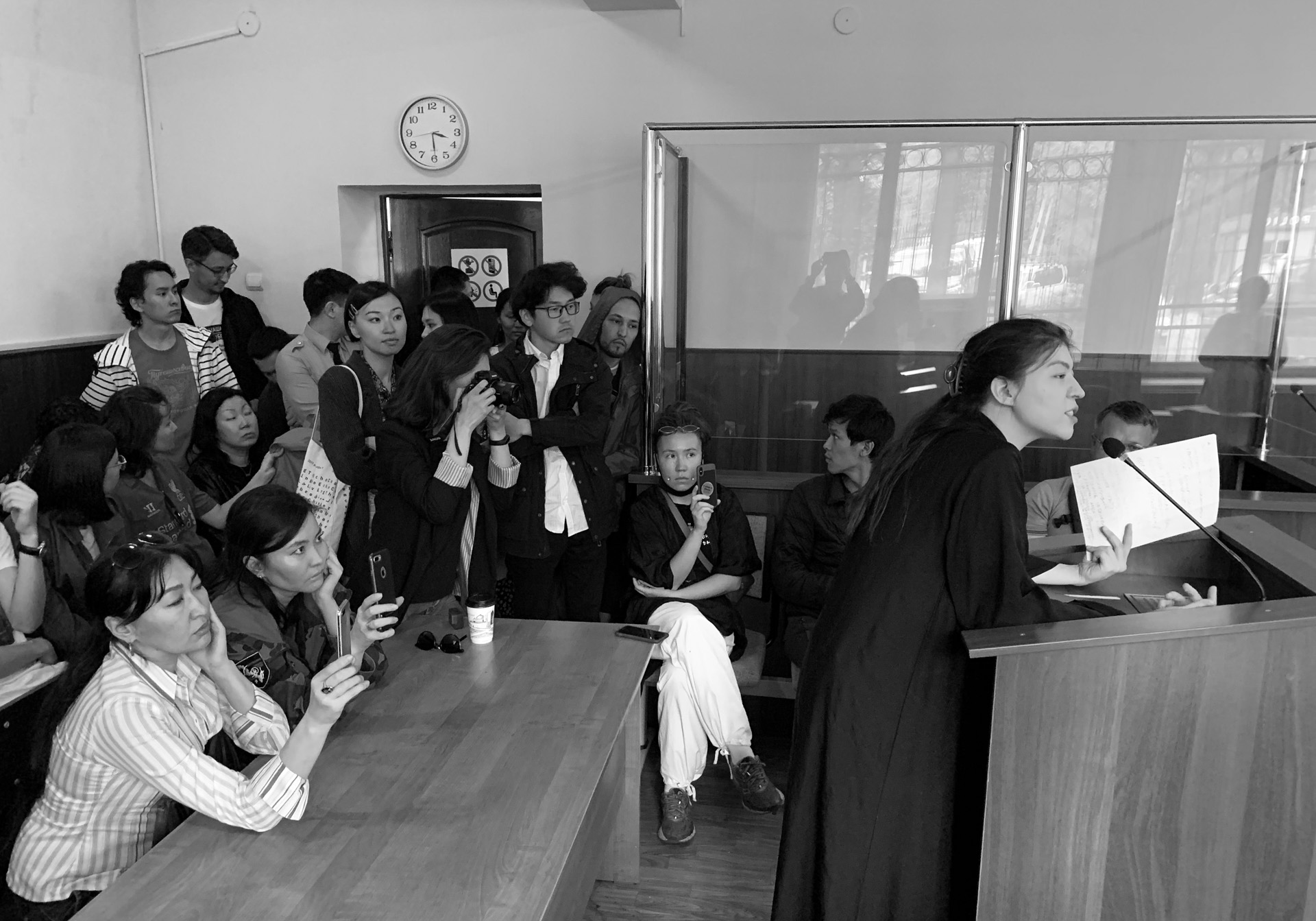

“My name is Suinbike. I came here, to this court, to file an appeal to the decision of the court of first instance. I act not so much personally and in my own defense as I do in the defense of the freedom to search, receive, and disseminate any non-threatening information, and in the defense of justice.
The court of first instance was unable to prove the wrongfulness of my actions and the actions of my colleagues (Aigul Nurbulatova and Aidos Nurbulatov — Å). Where does my guilt lie?! In the fact that I was a witness to a demonstration, a banner with the words “You can’t run away from the truth”? Is this against the law? Is it against the law to be at the scene of a demonstration with a video camera? All the previous judges could say was that Asya and Beybarys did not have permits from the akimat for a demonstration. What exactly did Asya and Beybarys need to get permission for? For free speech? What actions were two other filmmakers and I found guilty for? It was unclear! I have come to this court for the answer to all of these questions. And so that the court will nevertheless clarify how the freedom of expression and freedom to receive and disseminate information—which is the essence of a cameraperson’s work—can be exercised with the akimat’s permission.
What my colleagues and I are accused of has remained a mystery to me. I ask you to note that this is not only the essence of the cameraperson’s work: the right to the freedom of self-expression and the right to receive, search for, and disseminate information and ideas is not only a right, but also a duty. I ask you to remember the first documentarian, one of the founders of Kazakhfilm, Iskander Tynyshpayev, and his words: “The cameraman is responsible for the past and the present”...
Iskander Tynyshpayev (1909-1995) was Kazakhstan’s first professional cinematographer and the founder of its documentary film school. After graduating from the cinematography department of the All-Union State Film Institute, he was subjected to repression and spent ten years in the gulag. After his imprisonment, he returned to Kazakhstan and worked for over 40 years as the head cinematographer of the studios Kazakhfilm and Kazakhtelefilm. He shot several dozen feature and documentary films. He made a significant impact on the development of the Kazakhstani school of cinematography and documentary filmmaking.
At the court of first instance, I spoke about being an artist. It seems the court didn’t understand my point. Because I am a modern artist, I use video as a form, as a medium of expression, as well as new technologies, so this right is directly tied to my livelihood. And when I went, when I decided to go to the marathon, my decision to film the marathon was based on the fact that the people participating in it are people interested in self-development, people who care about life, and this is beautiful in and of itself.
I stood on the other side of the road (from Asya and Beybarys — Å). Why did I stand there? Because as an artist, as a cameraperson, it seemed to me that this would be the most optimal and original angle I could use. One of the main principles of composition in visual art is contrast. When I saw the banner...Well, isn’t it a wonderful contrast: the marathoners running and a banner with the text, “You CAN’T run away from the truth”!? So then, in my case, from my angle, it made for a very good composition.
Yes, I know Asya...and when my status was changed from witness to convicted person, the fact that I knew Asya was the police’s only argument. I don’t understand it. To me, this is not a rationale; it only confirms the political dimension of this ruling. That is, you yourselves want to rope us into some kind of politics...There was no political dimension to the banner.
Everything that happened, all of this outcry...all three million people supporting Asya and Beybarys...are people who took to the streets to support Asya and Beybarys in more than 30 cities around the world and were not arrested for carrying the exact same banner because they were in other cities! In other countries! In real democracies!
Performance art and rallies in solidarity with the arrested activists took place without arrests in Berlin, London, Milan, Prague, Los Angeles, Budapest, New York, and other cities outside Kazakhstan. Solidarity rallies and subsequent flash mobs with banners and signs in Astana, Almaty, and Uralsk ended in the arrest of artist-activists by police. The arrests of Kazakhstani citizens with blank signs in Uralsk and “invisible” signs in Astana evoked a broad international response.
You create the impression that we live in completely different worlds, parallel words...You and the people are so divided! I dislike it very much...
I am expecting (Suinbike is in her fourth month of pregnancy — Å)...and given my condition, I want to say: I am with the mothers, I am with the mothers with multiple children, I am with the women of Kazakhstan, I am with the environmental activists! I support all disadvantaged groups, of which there are many…I ask you to pay attention: with your rulings, your judicial proceedings, your hands, you separate and widen the gap between us. That’s all for now…”
The end of Suinbike Suleymenova’s speech was met with applause from those present in the courtroom.
Suinbike Suleymenova-Bazargaliyeva’s appeal was dismissed by the judge. When the judge read the verdict, the overwhelming majority of those present in the courtroom taped their mouths shut as a sign of protest against the court’s decision and to show solidarity with Suinbike Suleymenova. The word “Uyat” (meaning “shame,” “disgrace,” in Kazakh) was written on the tape. Most of the audience in the courtroom consisted of environmental and civic rights activists, artists, human rights defenders, cinematographers, designers, independent journalists, and members of the feminist movement. Previously arrested activists also came to court, including environmental activist Beybarys Tolymbekov, artist Roman Zakharov, and filmmaker Aigul Nurbulatova.
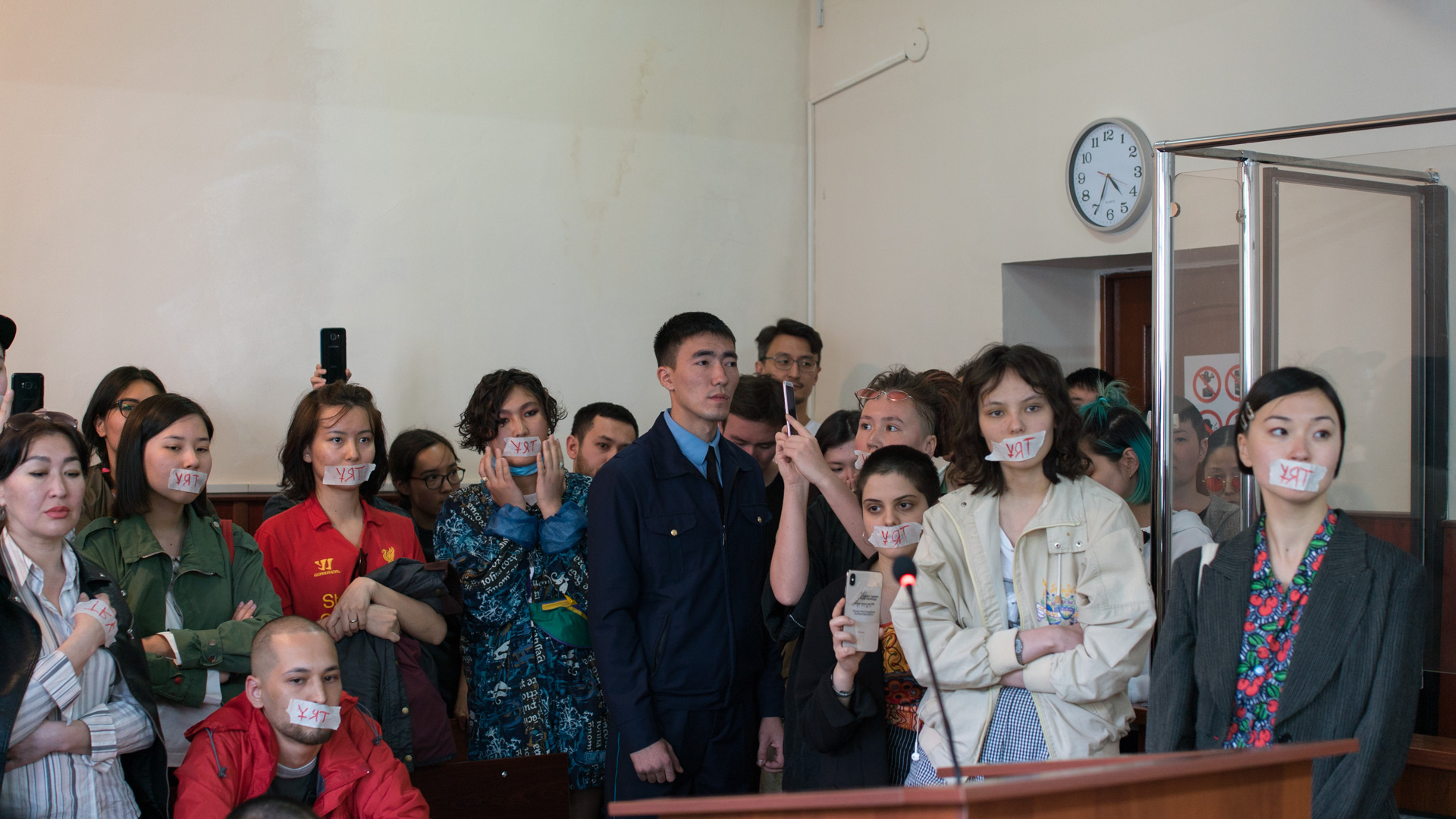
This act of civic performance art was one of the most large-scale examples of art activism and solidarity by young creatives in the history of Kazakhstan and Central Asia.
